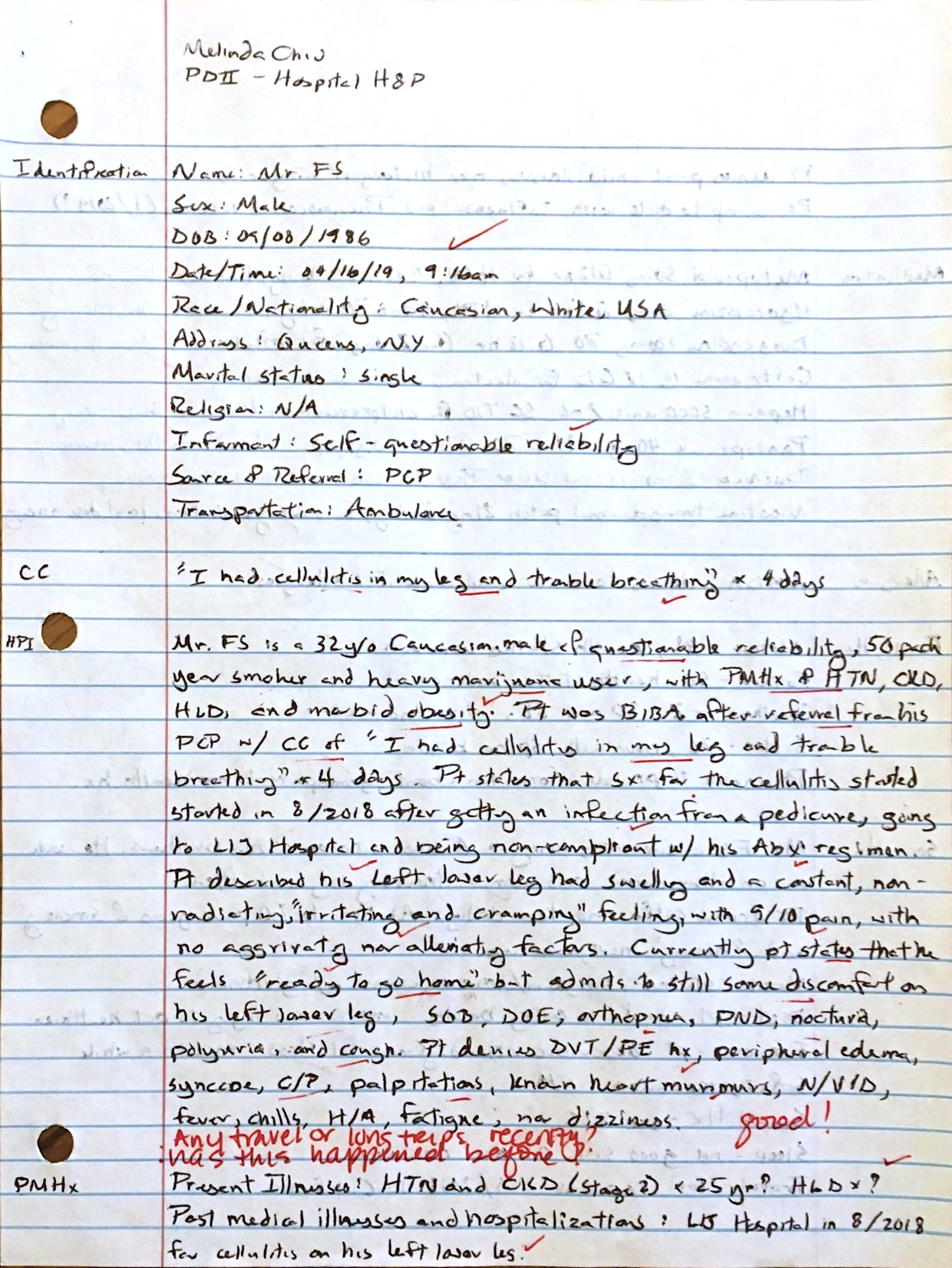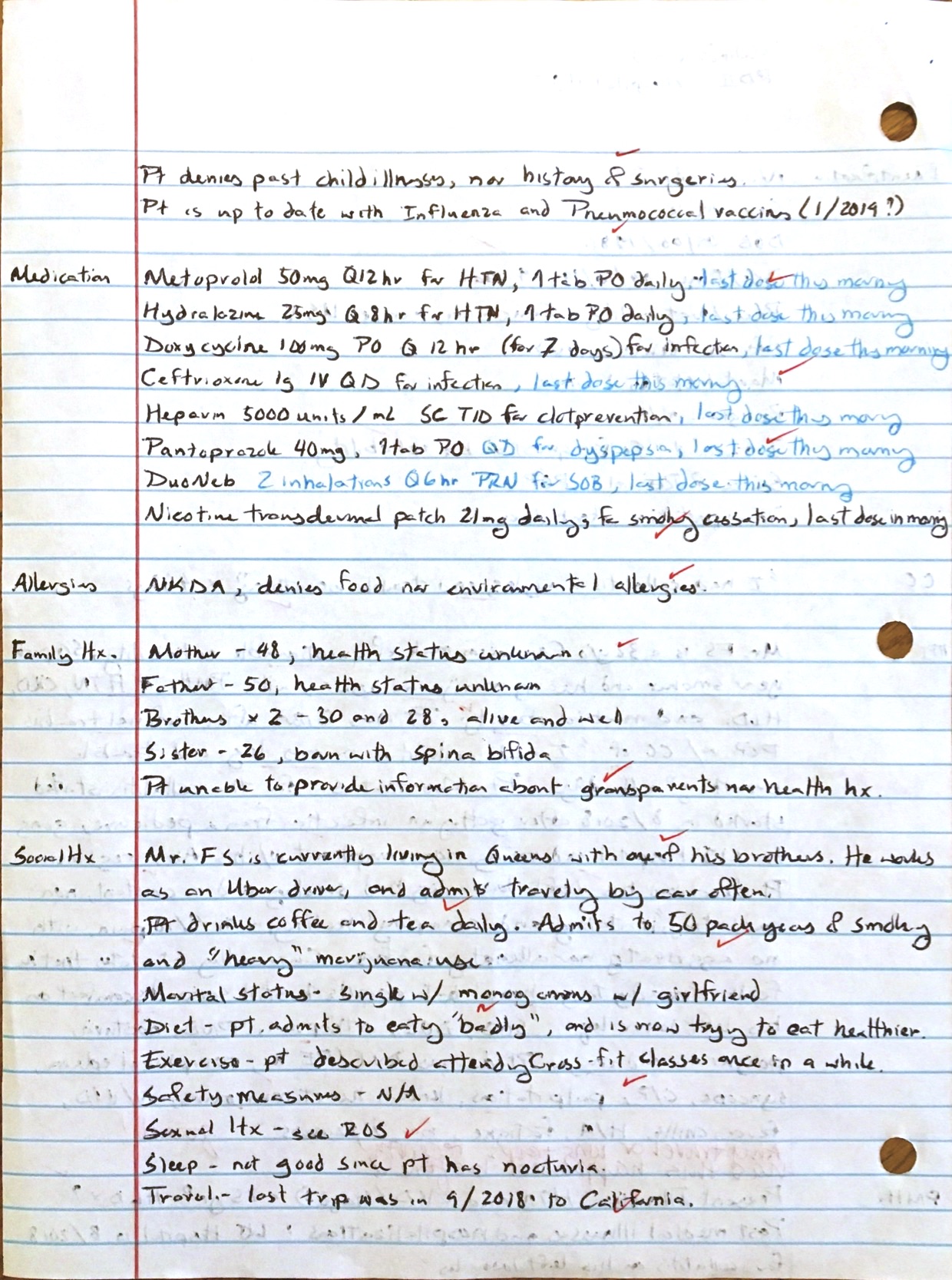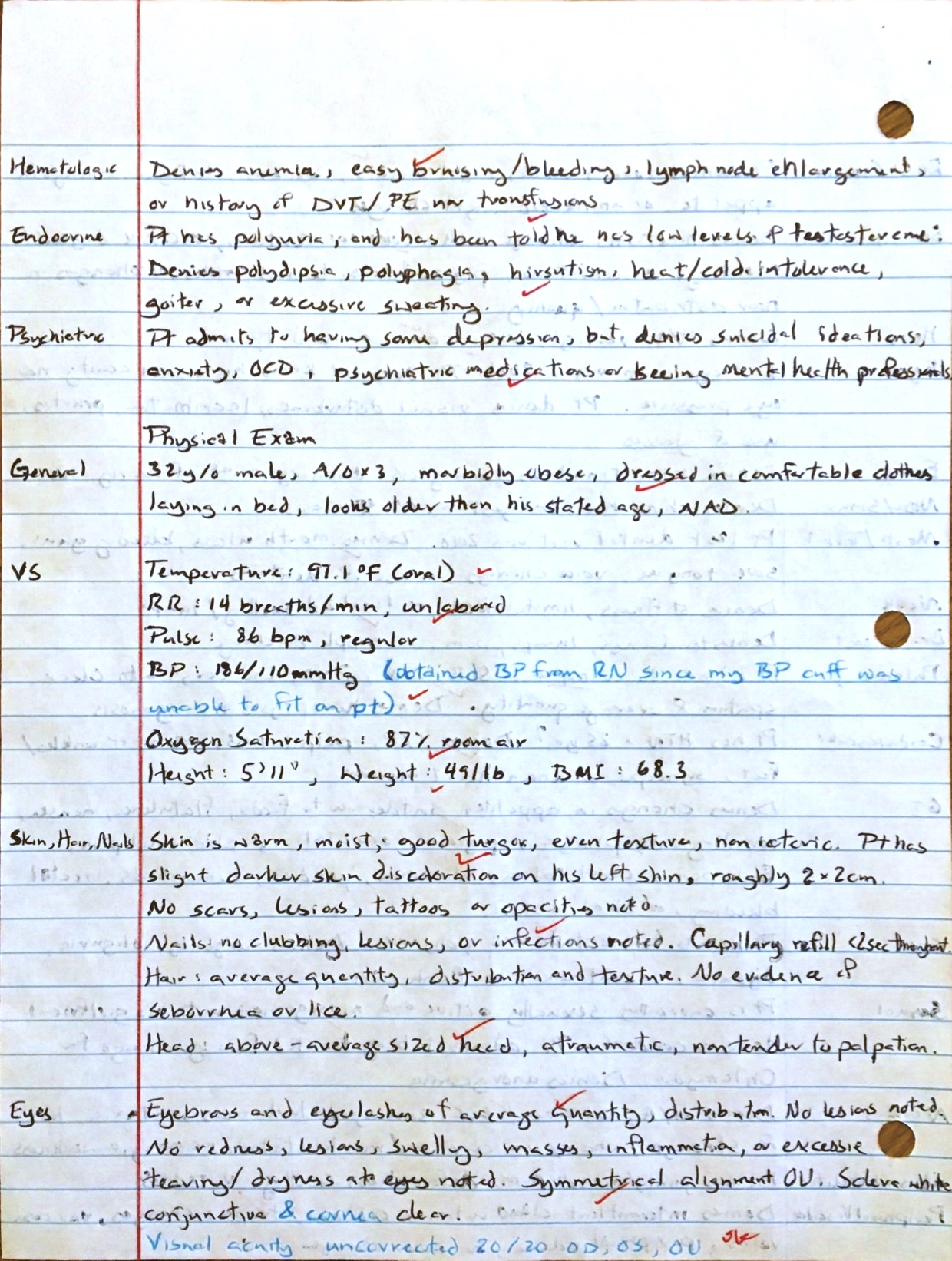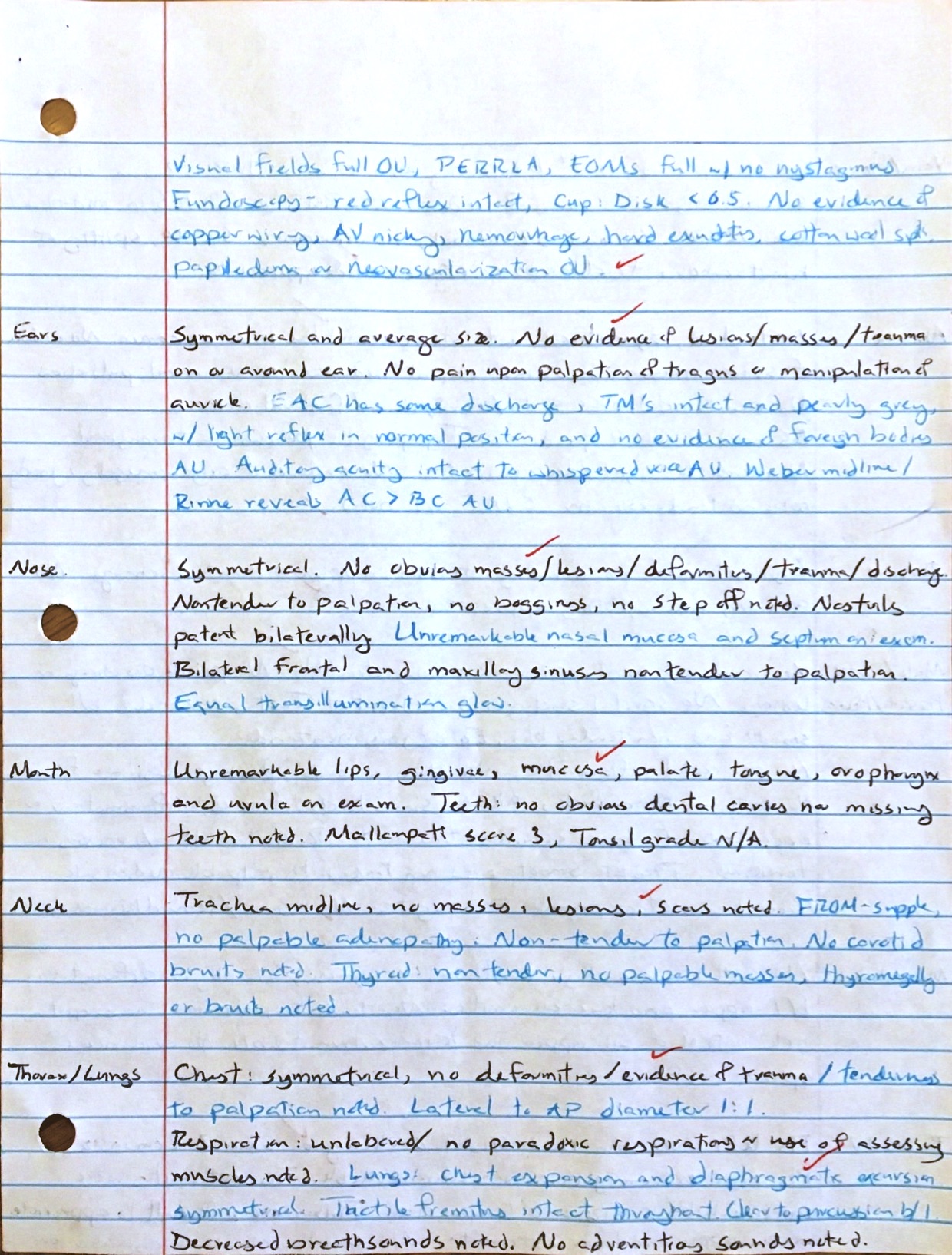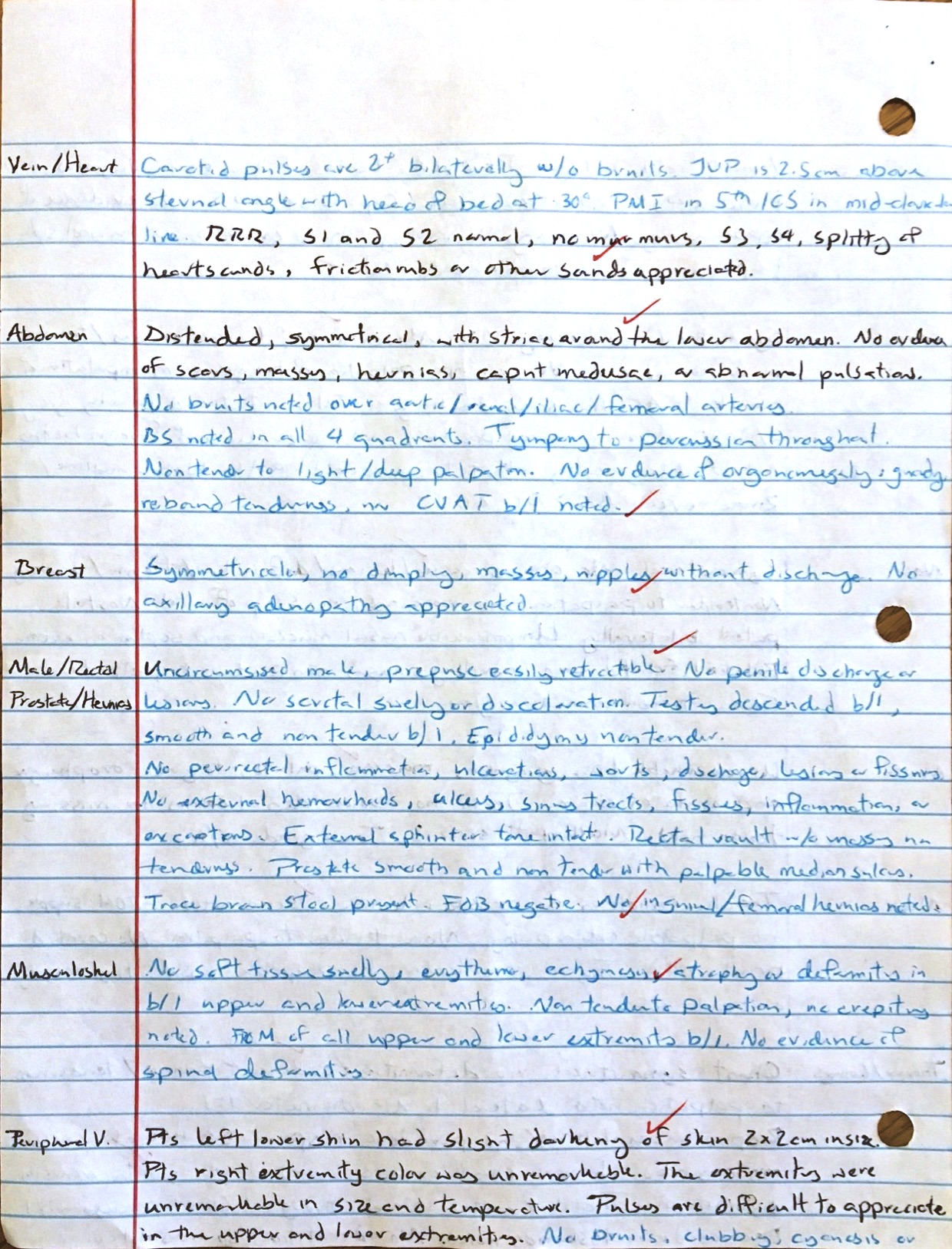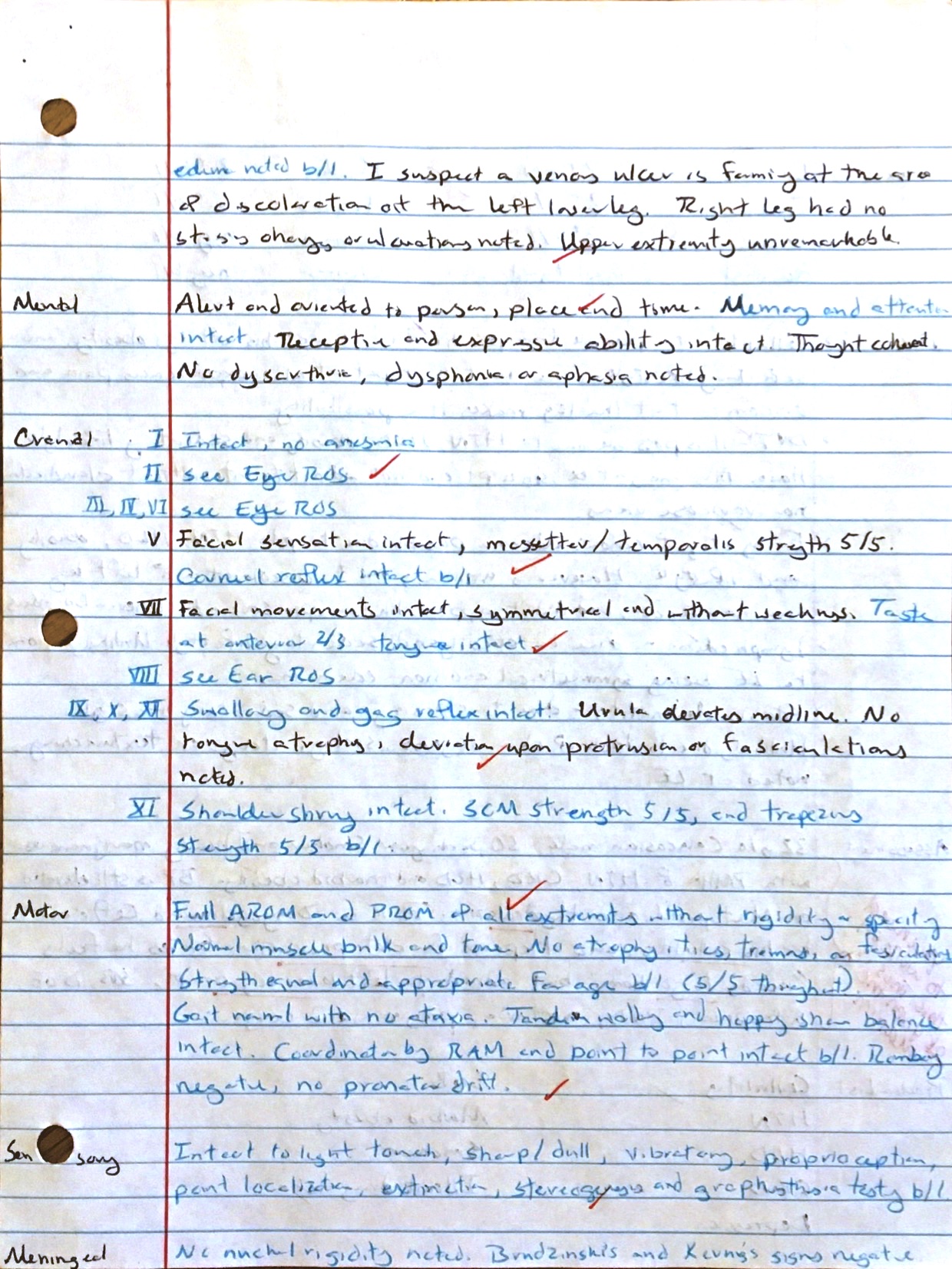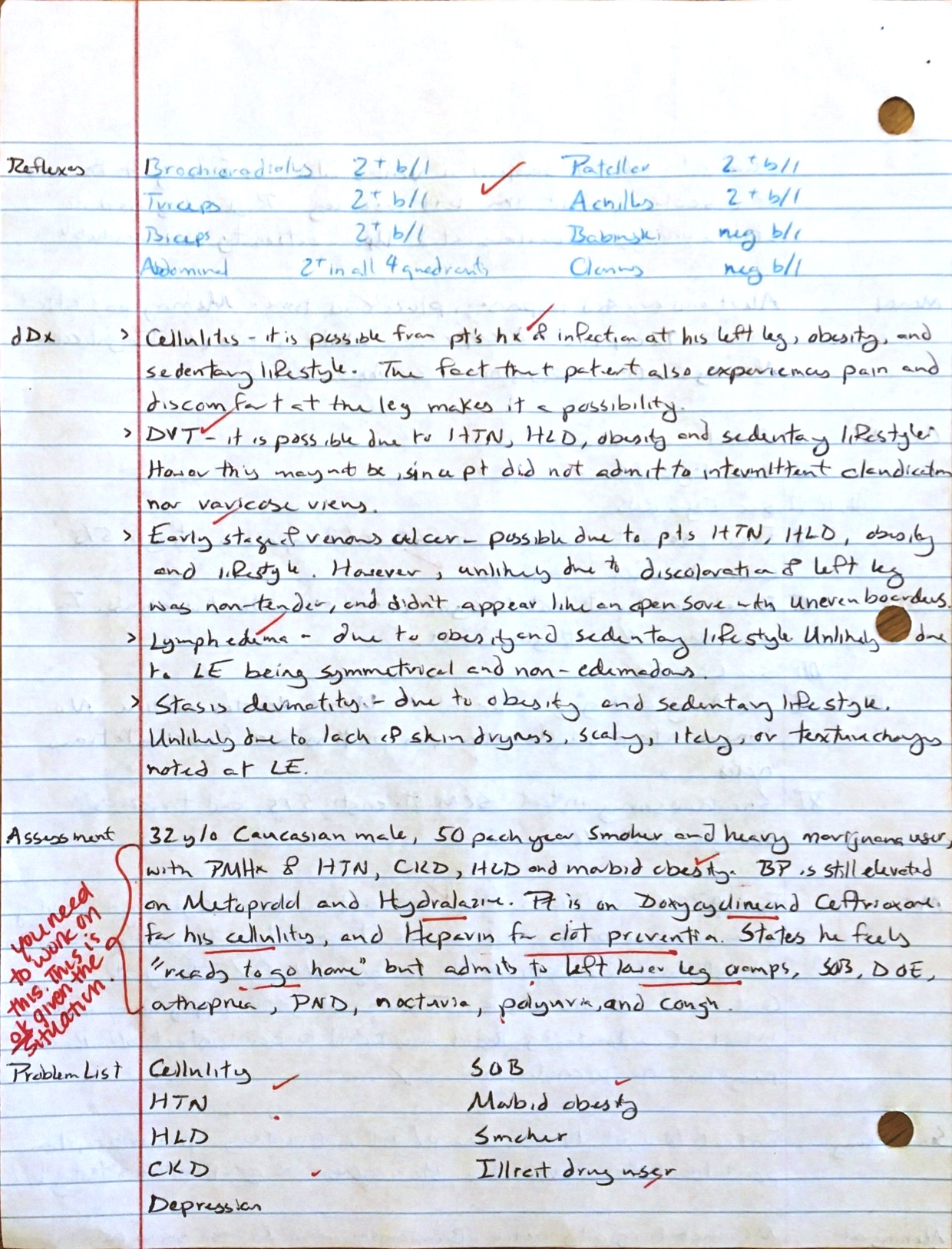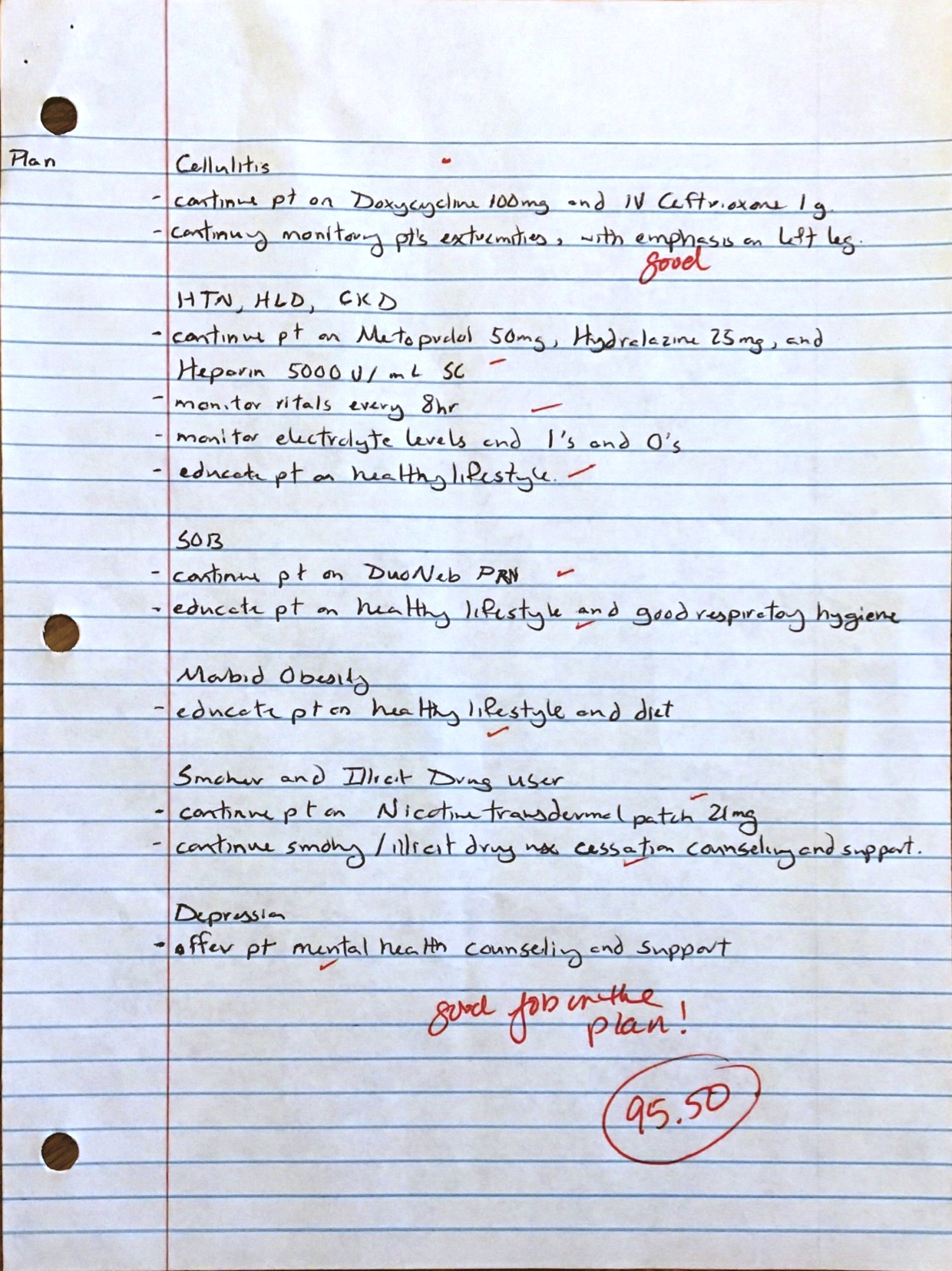Melinda Chiu
HPPA 512 – HPDP
Case Study of Mr. Barry Anderson
Immunizations
Although Mr. Anderson stated that he received “a bunch of shots from a free clinic” last year, we are unsure which ones, or if he is reliable about actually seeking medical care. It would be safer to give him these immunizations:
-
- Td should be given since he mostly lives on the streets, and may use dirty needles with his heroin use.
- PPSV23 vaccine should be given because he is a smoker.
- Influenza vaccine should be given because it is November and the beginning of the flu season.
- Zoster, Meningococcal ACWY, and Meningococcal B vaccines should be given because he is MSM, which is an indication.
- He does not need Tdap, MMR, Varicella, Hep A, Hep B, HPV, and Hib because they are childhood vaccines. He does not need PCV13, because there should be a year between that and PPSV23.
Screening
-
- For this single visit, I would perform a Rapid HIV test. If he is positive for HIV, I would educate him about the dangers of it, that there is a confirmatory test that can be done, and if positive he should be given treatments to lower his viral load.
- I would also screen for alcohol misuse, tobacco use, and depression (see brief intervention).
- Anderson’s blood pressure is normal. I would inquire if there is any family history of cardiovascular disease. If not, I would not need to check further for HTN this visit. I also would not need to screen for obesity because he is underweight with a BMI for 15.8.
- For Mr. Anderson’s lifestyle, I would typically want to screen for Tuberculosis, Hepatitis B and C infection, Syphilis, Chlamydia, Gonorrhea, and Herpes, but I would mostly likely be unable to get the results within this single visit.
Health Promotion/Disease Prevention
-
- Injury Prevention
- Using condoms with all sexual acts
- Avoid using his used needles because they may be dirty or rusty
- Be aware of bed bugs (and street animals) to ensure a safe sleep environment
- Look both ways before he crosses the street
- If he gets behind the wheel, make sure to use a seat belt, and not be under the influence of alcohol or drugs
- If he owns firearms he should conceal them and not let them be easily assessable
- Diet
- I would make Mr. Anderson aware that he is underweight and let him know the risks that can come with it, such as malnutrition, decreased immune function, anemia, and osteoporosis. I would encourage him to try to eat more frequently, and make healthy choices that contain more nutrients and vitamins.
- Exercise
- Anderson did not disclose much about his physical activity, but I would assess his ability to perform exercises, and/or his physical restrictions. If he is mostly sedentary I would ask him to try to exercise a few minutes daily, gradually increase, and eventually work up to 150 minutes per week. I could suggest him to walk around more, job around, or utilize park gyms. I would also let him know that with increased physical activity, he may be able to work up a better appetite to eat, and gain weight.
- Harm Reduction
- Utilize the buddy system when using heroin
- Be strict with using the needles from needle exchange program one time
- Make him aware of heroin overdose protection programs in the area
- Make healthy choices when getting fast food
- Nicotine gum/lozenges
Brief Intervention
Smoking Cessation
-
- “What do you smoke, and how much?” According to his reporting he smokes upwards of 5 cigarettes a day, which is ¼ of a pack. Assuming he has been “bumming them on the street” for 7 years (becoming homeless around age 23, and now currently 30), he has about 2 pack year smoking history.
- “Are you aware of what cigarettes can do to your health?” If he if unaware and willing to learn, I would let him know it can increase his risks of cancers, respiratory issues, bad breath, damaged teeth, and death. Also let him know it may be contributing to his weight loss and irritating the chronic cough he is experiencing.
- “Have you thought about quitting smoking?” “After you wake up in the morning, about how long after that do you take your first smoke?”
- “We can work together to help you quit. Would you be able to set a ‘quit date’? Have you considered nicotine alternatives like gums or lozenges?”
- “Quitting smoking can improve your health and save your money, because continuing the habit may get you hooked and start to buy packs for yourself” “Would you be interested in having a support group to go to?” “Can I schedule a follow-up date so we can talk about your progress made?”
Substance Use
It is especially important to ask these questions because I suspect that Mr. Anderson lost his job and apartment due to drug and alcohol use.
-
- “Do you drink alcohol? What do you drink? How many drinks would you say you have per week?” Mr. Anderson did not specify what he drinks and how much a week, but if I pressed him to tell me more, and he admits he drinks 5 or more drinks a day, I would try to counseling him more aggressively because he falls in the risky use group.
- I would ask him CAGE questions to get an idea if there is any alcohol abuse.
“Have you felt the need to cut back on your drinking”
“Have people commented or criticized your drinking, and you get annoyed at them?”
“Do you ever experience feeling guilty from your drinking?”
“Do you ever drink in the morning in order to stop shaking or recover from a hangover?”
If he responds to one of these questions positively, I would think he was at an increased risk. If he responded positively to two or more, I would think he is an alcohol problem and is at risk of abuse and addition.
-
- If he got a positive result on the CAGE questions, I would conduct the AUDIT questionnaire, skipping some that repeated the CAGE questions.
“How often do you have a drink containing alcohol?”
“How many drinks containing alcohol do you typically have when you drink?”
“How often do you have 6+ drinks per session?”
“How often during the past year did you find yourself unable to stop drinking?”
“How often during the past year did you forget or skip something because of drinking?”
“How often during the past year did you need to drink in the morning in order to stop shaking or recover from a hangover?”
“How often during the last year did you feel guilt from drinking?”
“How often during the last year did you forget what happened because of your drinking?”
“Have you or someone else been injured due to your drinking?”
“Has anyone expressed concern or suggested you to cut down on your drinking?”
Then I would calculate based on the AUDIT scoring system to see if I need to offer alcohol education, give advice, brief monitoring, and/or refer to a specialist or treatment.
-
- “Do you ever mix alcohol with your heroin use?”
- “Have you ever been drinking or using behind the wheel of a car?”
- “Besides heroin, do you do any other drugs?” I could also conduct the NIDA questionnaire.
“In the past year, how many times did you use alcohol, tobacco products, prescription drugs for recreational use, illegal drugs?”
If he says he has used any of these within the past year I would question further.
“In your lifetime, have you used cannabis, cocaine, prescription stimulants or opiods for recreational use, methamphetamine, inhalants, sedatives or sleeping pills, hallucinogens, street opioids, or other things”
If he says he has used any of these in his life, I would question further.
“In the past 3 months, how often did you use the substances mentioned before?”
“How often do you have the strong urge to use each drug?”
“How often does the usage of each drug lead to health, social, legal, or financial issues?”
“How often did you forget or skip something because of use of each drug?”
“Has anyone expressed concern or suggested you to cut down on your use of each drug?”
“Have you ever tried and failed to control, cut down or stop using each drug?”
According to the NIDA scoring system, I would assess the risk level of Mr. Anderson and conduct the respective recommendations.
“Have you ever used drugs by injection?”
Including an HIV test, I would recommend Hep B and C testing.
-
- “I would advise you to try to slowly lessen using these substances because they will have a negative impact on your health. Alcohol could lead to alcoholic hepatitis, liver cirrhosis, GERD, seizures, heart issues, and pancreas issues. Injecting drugs can lead to skin, joint, heart, and lung problems. They can be an opportunity to expose you to greater risk of infections. Also, alcohol and drugs may be another reason contributing to your weight loss.”
- “Have you thought about stopping drinking alcohol or using drugs?” “Have you tried cutting down on them in the past? What were some obstacles you came across?”
- I would counsel him against maladaptive thinking.
- “We can work together to help you quit. We can set a goal of how much you can cut down on your use of these substances if you would like? Would you be interested in having a support group to go to? Can I schedule a follow-up date so we can talk about your progress made?”
Depression screening
-
- This is important to do because people who drink alcohol and use drugs may be dealing with mental health issues. I would ask him if in the past two months did he, 1) experience little interest or pleasure in doing is usual activities, and 2) feel down, depressed, hopeless?
- If he agrees to the above questions, I may ask him further if he has suicidal ideations, anxiety, OCD, if he has ever seen a mental health professional. I would assess his situation and maybe let him know about the option of calling 311, or give him some referrals to mental health professionals.
Issues to Address:
-
- I would address his drug, cigarette, and alcohol uses first, and educate him of the harms that may come with it.
- Then I would counsel him on safe sex practices, educate on sexual diseases that may be risks for his lifestyle, and perform a Rapid HIV test.
- After, I would give the vaccinations.
- I would screen for depression, encourage him to exercise more, and give advice on harm reduction, along with how to have a better diet and prevent injuries.
- Finally, I would stress to him the importance of regularly being seen by a clinician, and ask if he would like to schedule an appointment to come back if a month to follow up.

